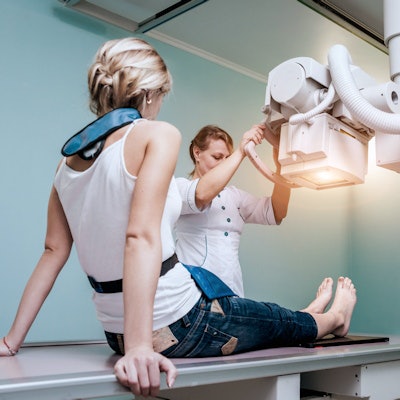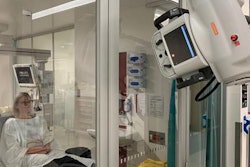
University of Iowa (UI) hospitals are ditching their lead aprons, citing evidence that radiation shielding for patients during x-ray exams is no longer necessary, according to a post on the school's health news blog.
Lead shielding has been used to protect patients from radiation in imaging procedures since the 1950s, yet the practice is no longer supported by most safety associations, explained Stephen Graves, PhD, an assistant professor of radiology, in the post.
Thus, UI Health Care will no longer use lead shields as radiation shielding for fetal and gonadal protection in children and adults, effective July 1, he said.
"A chest x-ray now, for example, delivers similar radiation dose to what one would receive from a transatlantic flight, or even just natural background radiation in about 10 days in the state of Iowa," he said.
Health physics and radiation safety organizations began recommending the discontinuation of radiation shielding in patients in 2020, based on evidence that exposure controls on x-ray machines can in fact increase radiation to other parts of the body in an effort to "see through" the lead.
In January 2021, the National Council on Radiation Protection and Measurements (NCRP) advised against the routine use of gonadal shielding during abdominal and pelvic radiography.
Moreover, the radiation dose from imaging procedures has been reduced by roughly 20 to 25 times in the time since the 1950s, Graves added. He noted that UI Health Care will soon be installing a photon-counting CT scanner, which further reduces radiation dose for imaging procedures.
"Over time, practices in the state are likely going to follow our lead on this," Graves concluded.




















